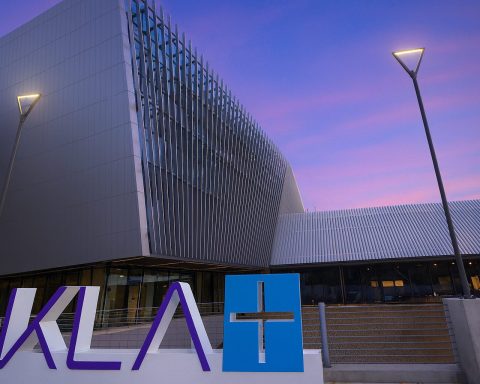- In 2022 Taiwan had about 6.55 million fixed broadband accounts, with 4.12 million (63%) fiber-based and 2.17 million (≈33%) cable modem subscribers, while ADSL subscriptions fell to around 260,000.
- As of 2024, the median fixed download speed is about 198 Mbps (mean ~137 Mbps), over 45% of fixed accounts enjoy 100–500 Mbps, and gigabit subscribers reached 13.5% by 2022.
- Taiwan is connected to roughly 10–14 international submarine cables carrying more than 95% of its international data traffic, and the early-2023 Matsu cable cuts underscored the need for backup links.
- By Q4 2022, three major mobile carriers—Chunghwa Telecom, Far EasTone, and Taiwan Mobile—accounted for about 89% of the mobile market, with 5G subscriptions at 6.71 million (roughly 22% of devices) and 5G coverage around 90% in urban/suburban areas and 85% overall.
- Chunghwa Telecom (HiNet) led fixed broadband with about 55% market share; Homeplus ≈15%, kbro ≈9%, and Taiwan Broadband Communications ≈5% among cable ISPs.
- The DIGI+ plan (2017–2025) aims to provide 2 Gbps broadband to 90% of the population and 85% 5G coverage in non-rural areas, while the Forward-Looking Infrastructure Program (2017–2020) allocated NT$43 billion to extend fiber and upgrade networks.
- iTaiwan provides nationwide free Wi‑Fi with over 10,000 hotspots, ensuring connectivity for locals and visitors alike.
- 5G was launched in July 2020; by end-2022 5G population coverage reached about 90% in urban/suburban areas and 85% overall.
- OneWeb: In 2023 Chunghwa Telecom signed a multi‑million‑dollar contract with OneWeb to bring LEO coverage to Taiwan, and by October 2024 OneWeb delivered 24‑hour coverage across the island with a planned 600+ satellite constellation.
- SES (O3b mPOWER): In August 2023 the Ministry of Digital Affairs announced a plan to deploy 773 SES satellite terminals for government use to backhaul data, with commercial service targeted for Q1 2025, and Matsu already equipped with an SES terminal.
Overview of Taiwan’s Internet Infrastructure
Taiwan boasts a highly developed internet infrastructure anchored by extensive fiber-optic networks and robust mobile coverage. Fixed broadband is ubiquitous in urban areas and well-penetrated in rural regions, with fiber (FTTx) as the dominant technology. Out of about 6.55 million fixed broadband accounts in 2022, roughly 4.12 million (≈63%) were fiber-based, while about 2.17 million (≈33%) used cable modem service [1]. Legacy DSL has been largely phased out – ADSL subscriptions plummeted from 1.55 million in 2013 to just 260,000 by 2022 [2]. This transition reflects Taiwan’s “fiber first” strategy, bringing high-speed connectivity to most households. Connection speeds are correspondingly high: as of 2024, the median fixed download speed is nearly 200 Mbps, putting Taiwan among the global leaders [3]. Over 45% of fixed broadband accounts already get 100–500 Mbps service, and the share of gigabit subscribers doubled between 2020 and 2022 (reaching 13.5%) as demand for ultra-fast internet grows [4]. Backbone infrastructure is resilient, with multiple submarine cables linking Taiwan internationally – though recent incidents of undersea cable damage have highlighted the need for backup systems (see Challenges section).
On the mobile side, Taiwan enjoys near-universal coverage and high user density. Mobile penetration long ago exceeded 100% of the population, and by 2022 the number of mobile subscriptions hit 30.15 million (in a country of 23.5 million people) [5]. Nationwide 4G LTE networks are mature, and since the launch of 5G in mid-2020, carriers have rapidly built out 5G infrastructure. All cities and major towns are blanketed by 4G/5G coverage, and 5G is expanding into smaller communities. By 2022, 5G subscriptions grew to 6.71 million (about 22% of mobile accounts) [6], and carriers projected reaching 50% 5G adoption by mid-2023 [7]. Taiwan’s mobile network quality is world-class – median mobile download speeds stand around 85–90 Mbps [8], on par with the fastest countries, enabling smooth HD streaming and video calls on the go. The country’s geography (a densely populated island) has helped telecom operators achieve extensive coverage with relatively few coverage gaps. Even remote villages, mountainous areas, and offshore islands like Penghu and Matsu have cellular coverage, augmented in part by microwave links and satellite backhaul for truly hard-to-wire areas. In short, Taiwan’s internet infrastructure is characterized by widespread fiber broadband, competitive cable networks, and advanced mobile networks reaching virtually the entire population.
Key Internet Service Providers and Market Share
Taiwan’s telecom market features a mix of large telecom companies and regional operators, with a recent consolidation into three major mobile carriers. For fixed broadband, the incumbent Chunghwa Telecom (CHT) – largely state-owned – is the market leader. Through its HiNet ISP arm, Chunghwa controls about 55% of fixed broadband connections [9], leveraging its nationwide fiber and xDSL network. Chunghwa offers services ranging from ADSL (now legacy) up to gigabit fiber, and also wholesales its infrastructure to smaller ISPs.
Cable TV system operators form the second pillar of fixed-line internet. Notable cable broadband providers include Homeplus (Zhongjia), kbro, and Taiwan Broadband Communications (TBC), each serving regional markets. Homeplus (brand of Zhongjia) holds roughly 15% of Taiwan’s fixed broadband market (particularly in Taipei, New Taipei, and other cities), kbro about 9% (with presence in Taipei, Taoyuan, Hsinchu, Taichung, etc.), and TBC around 5% [10]. These cable ISPs bundle TV and broadband and have successfully attracted users in their franchise areas, partly by bypassing Chunghwa’s last-mile infrastructure with their own coaxial/fiber networks [11]. Several other ISPs (such as Taiwan Fixed Network/TFN, So-net, Seednet) account for the remaining market share, often targeting niche segments or specific regions. Many smaller ISPs resell Chunghwa’s fiber last-mile under wholesale access agreements.
In the mobile sector, three integrated telecom companies dominate after recent mergers: Chunghwa Telecom, Far EasTone (FET), and Taiwan Mobile (TWM). As of Q4 2022, Chunghwa led with about 35.5% of mobile service revenue share, followed by Far EasTone at 25.9% and Taiwan Mobile at 23.5% [12]. These top three collectively control nearly 89% of the mobile market [13]. Until 2023, two smaller operators existed – Taiwan Star (T Star) and Asia Pacific Telecom (APT) – but both have since been acquired. Taiwan Mobile merged with T Star (completed Dec 2023) to bolster its spectrum and subscriber base [14]. Likewise, Far EasTone absorbed APT (effective Dec 2023) [15]. The result is a triopoly of nationwide carriers, each now holding substantial spectrum portfolios for 4G and 5G. Chunghwa remains the largest by subscribers, but the gap has narrowed post-mergers (all three now have roughly 30%± of mobile subscribers each). This consolidation is expected to ease the fierce price wars seen in the 4G era and improve economies of scale for 5G rollouts [16].
Other notable players include mobile virtual network operators (MVNOs) and legacy fixed-line telcos. A handful of MVNOs lease capacity to offer niche mobile plans (for example, business IoT connectivity or low-cost prepaid service), though their collective market share is small. On the fixed-line side, companies like Taiwan Mobile and Far EasTone also offer home broadband: Taiwan Mobile provides cable broadband in some areas (inherited from a merger with cable ISP CNS) and FET offers fiber broadband (often by leasing Chunghwa’s last-mile). However, each of these has only about a 4–5% share of fixed broadband connections [17]. International operators have minimal presence due to regulations, though many partner with local firms for data center, cloud, or enterprise services. Overall, Taiwan’s ISP landscape is led by a few large domestic telecoms – Chunghwa, FET, Taiwan Mobile – complemented by strong regional cable ISPs and a supportive cast of smaller providers.
Government Initiatives and Policies for Digital Development
The Taiwanese government has long championed internet accessibility as a national priority, explicitly framing broadband as a basic human right [18]. Over the past decade, authorities rolled out ambitious programs to expand and democratize digital infrastructure. A cornerstone policy was the “Digital Nation & Innovative Economy Development Plan (2017–2025)”, also known as the DIGI+ plan. Launched by the Executive Yuan in 2016, DIGI+ set aggressive targets for building a “smart island” – including boosting digital economy output, raising digital literacy, and ensuring virtually all citizens enjoy fast internet. For example, by 2025 the plan aimed to provide 2 Gbps broadband service to 90% of the population and 85% 5G coverage in non-rural areas [19]. This vision of universal high-speed access has guided public investments and regulatory reforms throughout the late 2010s.
Another flagship effort was the Forward-Looking Infrastructure Development Program (2017–2020), which dedicated a special budget of NT$43 billion to digital infrastructure projects [20]. Under this program, the government invested in extending fiber-optic networks into underserved areas, upgrading network equipment, and enhancing internet resiliency. Broadband for villages and indigenous tribes projects, initiated by the National Communications Commission (NCC), laid fiber cables to remote rural communities – achieving 100% broadband coverage in dozens of isolated villages even by 2008 [21]. Through such initiatives, previously underserved rural and mountain areas gained access to >2 Mbps connections (at the time) [22]. The program also subsidized operators to upgrade rural health clinics and public facilities to broadband. Notably, 403 rural public health offices and mobile clinics across Taiwan were targeted to receive 100 Mbps internet under the digital inclusion efforts [23]. This has practical benefits like enabling telemedicine and cloud-based services in remote townships. By treating “internet access as a basic right”, Taiwan’s government ensured disadvantaged groups – whether in isolated villages, low-income households, or elderly populations – could get online with decent speeds [24].
Taiwan’s Forward-Looking Infrastructure program (2017–2020) placed heavy emphasis on expanding broadband access as a basic right, alongside goals in cybersecurity, digital content, smart services, and talent development. The government set out to achieve 1 Gbps connectivity for 90% of the population to eliminate the urban-rural gap [25]. It invested in projects to raise internet quality in remote areas (e.g. upgrading hundreds of village clinics to 100 Mbps [26]), while also promoting digital skills and innovative online services nationwide.
Taiwan has also kept its regulatory framework up-to-date to foster competition and innovation. In July 2020, the NCC enacted the new Telecommunications Management Act, replacing a legacy telecom law [27]. This reform streamlined licensing (leading to 140 operators receiving licenses by 2023 under the new framework) [28], and created a more flexible, service-based regulatory regime. The move encouraged new entrants (e.g. niche MVNOs, community network providers) by lowering barriers, and aligned regulations with converged digital services in the 5G era [29] [30]. The government has also promoted open data and a thriving tech startup ecosystem – for instance, establishing a Ministry of Digital Affairs in 2022 to coordinate digital policy and “connect citizens and technology” in an open-government approach [31]. Cybersecurity has been elevated as well (“Cybersecurity is National Security” initiative) to protect critical networks amid rising cyber threats [32].
A signature convenience for citizens and tourists alike is iTaiwan, a nationwide free Wi-Fi initiative. The government operates over 10,000 free Wi-Fi hotspots in public areas (from city halls and libraries to tourist spots and even mountaintops) to provide basic internet access for all [33]. This has been lauded internationally as a unique offering (Taiwan was one of the first countries to offer large-scale free wireless internet to the public [34]). The iTaiwan system has millions of registered users and has helped ensure that even those without mobile data plans or in-transit can stay connected [35].
Affordability measures have also been pursued. The government, via the NCC, regulates tariffs for dominant providers like Chunghwa to keep broadband affordable. In 2022, the NCC approved substantial price cuts for Chunghwa’s high-speed fiber plans to encourage users to upgrade to faster tiers [36] [37]. For example, 300 Mbps and 500 Mbps home fiber plans saw monthly fees drop by 15–28%, and 1 Gbps service dropped by 21% in price [38]. As a result, Taiwan’s broadband prices are relatively low by international standards – the average cost of a 60 Mbps unlimited plan is around $25 USD per month [39], well below the global average (~$61). For low-income households, additional subsidies and “digital opportunity centers” provide affordable internet and training [40]. These initiatives together reflect a strong policy commitment to universal, affordable internet access as a foundation of Taiwan’s digital development.
Internet Speeds, Affordability, and the Urban-Rural Divide
Taiwan enjoys fast internet speeds at reasonable prices, though the government continues working to close remaining gaps between urban and rural areas. On speed benchmarks, Taiwan ranks among the top countries globally. In 2024 its fixed broadband averaged about 137 Mbps download (mean) with a median download speed near 198 Mbps [41], outpacing many European and Asian peers. Mobile internet is similarly brisk with median downloads around 86 Mbps [42]. These high speeds are enabled by the prevalence of fiber connections and advanced cable DOCSIS networks, as well as early adoption of 5G. Even outside big cities, customers routinely enjoy triple-digit Mbps rates on home internet. Latency and reliability are generally excellent, thanks to modern infrastructure and substantial network redundancy in the core. Taiwan’s internet consistently earns high marks in international comparisons of broadband quality; for instance, a Cable.co.uk study in 2023 even named Taiwan as having the world’s fastest average internet in certain measures [43]. While different reports vary, the consensus is that Taiwan’s internet is not just widespread but high-performance.
Affordability has been a bright spot. Broadband tariffs relative to income are low – well under the 2% of GNI per capita benchmark recommended by the UN for affordability. As noted, a standard unlimited broadband plan (100 Mbps) costs around NT$500–800 (USD $16–26) per month, which is accessible to most households [44] [45]. Competitive pressure among ISPs and regulatory oversight have kept prices consumer-friendly. In late 2022, for example, Chunghwa Telecom cut the price of 1 Gbps fiber service from NT$2,399 to NT$1,899 ($61) and slashed 500 Mbps service by 28% to NT$1,299 (~$42) [46]. Such reductions make ultrafast plans more attainable and have nudged many subscribers to upgrade. Mobile data is also affordable in Taiwan – unlimited 4G/5G smartphone plans are widely available in the range of NT$599–799 ($20±) monthly, often bundled with freebies. For more budget-conscious users, prepaid SIMs and the ubiquitous free Wi-Fi hotspots (iTaiwan) help ensure cost is rarely a barrier to basic internet use.
Despite this overall rosy picture, Taiwan’s government recognizes an urban-rural digital divide still persists in subtle ways. Virtually all populated areas have physical network coverage – the days when remote villages lacked broadband are largely over, thanks to programs that achieved nearly 100% rural broadband coverage [47]. However, the quality and adoption of services can differ. In rural townships (especially in mountainous central Taiwan or outlying islands), fiber-to-the-home rollout took longer and some residents still rely on older technologies (like VDSL or fixed wireless) offering lower speeds than dense cities. The Forward-Looking Infrastructure initiative specifically aimed to raise rural connection speeds from 100 Mbps to 1 Gbps to match urban standards [48]. One concrete achievement was upgrading over 400 remote clinics to 100 Mbps, which also improved connectivity for the surrounding communities [49]. Additionally, free Wi-Fi and mobile base stations were deployed to fill connectivity gaps for indigenous villages and farming areas, so that even if home broadband penetration is lower, people can get online via public access.
The “digital divide” in Taiwan today is often more about usage and skills than infrastructure. Surveys show that internet adoption is nearly universal for younger and middle-aged groups, but among seniors (70+ years old) it drops significantly [50]. The first-level digital divide therefore affects mainly the elderly and those with less education, who may not use the internet even if it’s available [51]. The government addresses this by funding Digital Opportunity Centers and training programs in rural areas to improve digital literacy [52]. There are also initiatives to make websites and services more accessible (multi-lingual, user-friendly interfaces) so that all demographics can benefit equally. Income-based disparities in internet access are relatively small due to low prices and subsidy programs – lower-income households can apply for discounts on broadband, and free Wi-Fi offers a fallback.
In terms of geographic disparities, Taiwan’s strong emphasis on equity has paid off: the urban-rural broadband penetration gap has narrowed to the single digits in percentage points. By 2023, overall internet penetration reached ~91% of the population [53], and fixed broadband covered around 65% of households (with the remainder largely using mobile data) [54]. Remote counties now enjoy similar online services as Taipei – for instance, residents of offshore islands like Matsu can stream videos and join video calls, though their backhaul is partly reliant on microwave and satellite links. When backhaul cables were severed to Matsu in early 2023, the government quickly expanded microwave bandwidth and provided satellite units to restore connectivity [55] [56]. This underscores both the challenges of Taiwan’s location and the commitment to digital resilience and inclusion. In summary, Taiwan has combined high speeds, low costs, and proactive inclusion policies to minimize the digital divide, though ongoing efforts continue to focus on elderly users and reinforcing rural infrastructure to fully equalize the digital experience across the island.
Mobile Internet and 5G Rollout Status
Taiwan was an early adopter of each mobile generation, and 5G is no exception. 5G services launched in July 2020, shortly after the spectrum auctions, and all major carriers (Chunghwa, FET, Taiwan Mobile) deployed 5G networks rapidly in 2020–2021. The rollout has been swift: by the end of 2022, 5G population coverage reached about 90% in urban and suburban areas, and overall coverage (including rural) was around 85% of population [57]. Major cities like Taipei, Kaohsiung, Taichung enjoy nearly blanket 5G coverage, while rural towns have more patchy coverage but still generally get a 5G signal in town centers. The government set a target of 85% coverage for non-rural populations by 2025 [58], which operators met well ahead of schedule. Investment in thousands of 5G base stations (in mid-band frequencies around 3.5 GHz primarily) has enabled average 5G download speeds of 300–400 Mbps in many areas, with peak speeds over 1 Gbps under ideal conditions. Importantly, 5G has helped relieve congestion on 4G networks and opened new wireless broadband possibilities.
Adoption of 5G has also been robust. By late 2022, 5G subscriptions grew to 6.71 million, comprising about 22% of all mobile accounts [59]. In 2023, this figure surged as more affordable 5G phones and plans became available – telecoms anticipated half of all mobile subscribers on 5G by mid-2023 [60]. Indeed, with the mergers creating three stronger carriers, the migration to 5G has been aggressively pushed through incentives and phasing out of older plans. Carriers offered free 5G upgrades, unlimited data packages, and bundled content (like 4K streaming services) to entice 4G users onto 5G. By 2024, industry reports suggest Taiwan likely has one of the highest 5G adoption rates in East Asia, possibly exceeding 60% of subscribers. The remaining 4G users are mostly those with older devices or budget plans; 3G was completely shut down by 2019, and 2G is also discontinued, meaning the mobile landscape is essentially all 4G/5G. Voice service is increasingly carried by VoLTE and VoNR (Voice over New Radio) as 5G SA (standalone) networks come online. Chunghwa and others launched 5G standalone cores to enable lower latency and network slicing for advanced applications.
On the network side, Taiwan’s 5G networks primarily utilize the 3.5 GHz band (for which Chunghwa, Taiwan Mobile, and FET secured sizable chunks of spectrum in the auction). Chunghwa and FET also formed a network-sharing joint venture for 5G in rural areas to expedite coverage and reduce duplicate infrastructure, a pioneering collaboration. In addition, a smaller 28 GHz mmWave band was made available; though mmWave is not widely deployed yet, some hotspots in dense urban environments (like arenas or transportation hubs) use it to demonstrate multi-gigabit speeds. Far EasTone has been a leader in testing Open RAN (opening opportunities for Taiwan’s tech manufacturers in the 5G supply chain), while Chunghwa leverages its in-house manufacturing arm and works with local companies like ASUS and D-Link for some 5G equipment. Taiwan’s strong ICT sector means much of the 5G network gear (servers, baseband units, etc.) can be locally sourced or developed, aligning with the government’s push for self-reliant critical infrastructure.
The use cases for 5G in Taiwan are growing: consumers enjoy faster mobile broadband and 4K video streaming, while industry and government are exploring smart city and IoT applications. For example, Taipei’s smart transportation pilots use 5G for real-time traffic monitoring and autonomous bus trials. In manufacturing, leading semiconductor fabs are using private 5G networks for real-time equipment monitoring and AR/VR maintenance. Additionally, Taiwan’s tech startups are innovating with 5G applications in healthcare (e.g. remote surgery demonstrations), education (VR classrooms), and gaming (cloud gaming services). The government’s DIGI+ plan explicitly includes “Beyond 5G” research, preparing for next-gen wireless like 6G and integrating satellite comms into 5G networks [61].
It’s worth noting that 4G remains very much alive and complements 5G. 4G LTE coverage is essentially 100% nationwide, ensuring that when users leave 5G coverage, they fall back to a still-fast 4G connection (Taiwan’s 4G speeds average 40–50 Mbps). This dual-layer network guarantees mobile users a reliable connection virtually anywhere – a critical factor in a country prone to typhoons and earthquakes that can disrupt infrastructure. During emergencies, carriers have portable base stations and satellite-equipped mobile cell sites to restore coverage if towers go down.
Looking forward, Taiwan’s mobile operators are focusing on expanding 5G capacity and exploring 5G Advanced features. By 2025, we can expect further densification of 5G sites (especially as data usage climbs) and possibly new spectrum auctions (e.g. repurposing 4G bands for 5G). The telecom regulator is also studying opening the 6 GHz band for future use and fostering a domestic ecosystem for 6G research. In summary, mobile internet in Taiwan is fast, widely available, and on a clear path of evolution – the 5G rollout has been successful and is paving the way for even more advanced wireless technologies in the coming years.
Internet over Satellite: Starlink and Domestic Efforts
Given Taiwan’s geopolitical situation and vulnerability as an island, satellite internet has become a strategic focus as a backup to terrestrial networks. While traditional satellite internet (geostationary satellites) has existed via international providers, the new wave of low Earth orbit (LEO) satellite constellations is particularly pertinent to Taiwan’s resiliency planning. In the past couple of years, there have been significant developments:
- Starlink (SpaceX): Taiwan explored cooperation with Elon Musk’s Starlink to provide LEO internet service, seeing it as a potential game-changer for network resilience. However, attempts to bring Starlink service to Taiwan stalled due to regulatory hurdles. Taiwan law requires any telecom service provider to have at least 51% domestic ownership, which SpaceX found unacceptable [62]. Negotiations with Starlink collapsed in 2022, and the company has taken a hands-off approach to the Taiwan market (reportedly even restricting its staff from business travel to Taiwan) [63]. Thus, as of 2025, Starlink is not available in Taiwan to the general public. This gap became notable when comparisons were drawn to Ukraine’s use of Starlink in wartime – Taiwan wanted similar capabilities, but had to seek alternatives.
- OneWeb (Eutelsat OneWeb): Taiwan pivoted to partner with OneWeb, a UK-based LEO satellite provider. In 2023, Chunghwa Telecom signed a multi-million-dollar contract with Eutelsat OneWeb to bring LEO coverage to Taiwan [64]. By October 2024, officials announced that OneWeb service would provide 24-hour low-earth-orbit satellite internet coverage across Taiwan [65]. This milestone was achieved with ground stations and user terminals deployed such that, if fiber and mobile networks are disrupted (e.g., in a conflict or disaster), OneWeb could keep critical communications online. Chunghwa Telecom’s president stated that full coverage was expected by end of that month (Oct 2024), with commercial services for government and enterprise users available once sufficient bandwidth was in place [66]. Essentially, Taiwan secured a UK-European satellite internet lifeline as a safeguard against being cut off. The OneWeb partnership plans to utilize OneWeb’s constellation (which will number 600+ satellites globally) to ensure Taiwan is blanketed by LEO signals by 2025 [67]. OneWeb also sees Taiwan as a key Asian hub and is working with Taiwanese manufacturers on next-gen satellite and ground station technologies [68].
- SES (O3b mPOWER): Taiwan didn’t stop at one provider. The Ministry of Digital Affairs (MODA) also inked an agreement with SES, a satellite operator from Luxembourg, to leverage its medium Earth orbit (MEO) satellites. In August 2023, a project was announced to deploy 773 satellite terminals from SES for government use, including on outlying islands and as backup for critical infrastructure [69]. These terminals (likely using SES’s O3b mPOWER system) would provide high-throughput links capable of backhauling data when undersea cables or microwave links fail. The goal was to have these terminals in place by early 2024 and start offering commercial satellite backhaul service by Q1 2025 [70]. Notably, Matsu’s Nangan Island has already been equipped with an SES terminal to serve as a backhaul for mobile base stations [71]. This proved valuable when Matsu’s undersea cables were cut – the satellite link, along with microwave, kept essential connectivity up [72].
- Domestic “Taiwan Starlink” Initiatives: Taiwan is also building its own satellite communications capabilities. MODA announced plans in late 2023 to set up 700 satellite communication hotspots across Taiwan by end of 2024 [73]. These would be essentially ground hotspots that can connect directly to satellites (likely the OneWeb/SES systems in the interim) and provide Wi-Fi or network access to nearby users in case terrestrial networks go down. The emphasis was that this satellite system would be indigenous to Taiwan and serve military and government needs during severe outages [74]. Additionally, the state-owned Taiwan Space Agency (TASA) is developing Taiwan’s own communications satellites. The plan is to launch the first two prototype communication satellites by 2026 [75] as a test towards a potential Taiwanese mini-constellation. While these won’t immediately yield a full Starlink-like network, they mark the beginning of Taiwan’s effort to have sovereign space-based communication assets. (Taiwan has experience in satellite manufacturing, but no domestic launch capability yet, so it will rely on foreign launch services for these satellites [76].)
- Other partnerships: There are discussions to collaborate with Project Kuiper (Amazon’s planned LEO constellation) in the future, as Taiwan seeks not to rely on any single foreign provider [77]. The strategy is to diversify across multiple satellite systems (OneWeb, SES, possibly Kuiper) to ensure redundancy. By “backing many horses,” Taiwan hopes at least one will always be available even if others face issues [78]. The government is also compiling a list of approved satellite services that can be activated in emergencies if undersea cables and even microwave links are all down [79].
In summary, the current status of satellite internet in Taiwan is that consumer satellite broadband is not widely offered (no Starlink or similar retail service yet), but the groundwork is being laid rapidly for strategic satellite connectivity. OneWeb and SES are providing the infrastructure for government and emergency use, with potential expansion to enterprise and remote consumers. For instance, fishermen or mountain residents could eventually tap into these services if needed. The impetus for all this was vividly illustrated in early 2023 when the Matsu islands were cut off for 50+ days after undersea cables were severed (likely by hostile interference) [80] [81]. That incident was a wake-up call that spurred Taiwan to accelerate satellite solutions as a defense against communication blackouts [82]. By late 2024, Taiwan has made tangible progress: it effectively has a “backup internet in the sky” ready, via OneWeb/SES, and is pushing towards its own satellite network in the coming years. This multi-pronged satellite approach is a key part of Taiwan’s resilience planning in the face of potential natural disasters or security threats.
Challenges and Opportunities in Taiwan’s Connectivity Landscape
Taiwan’s digital connectivity stands at a high level, but it’s not without challenges. At the same time, new opportunities are on the horizon to further strengthen and leverage this connectivity. Below is a breakdown of key challenges and opportunities:
Challenges:
- Geopolitical Vulnerabilities: As an island, Taiwan is heavily dependent on undersea fiber optic cables for global internet connectivity. There are about 10–14 international submarine cables landing in Taiwan [83] [84], which carry over 95% of its international data traffic. These cables are susceptible to damage from earthquakes (the region is seismically active) and from intentional sabotage. The 2023 incident of two cables to Matsu being cut – allegedly by ships linked to China – highlighted the risk of Taiwan being isolated digitally [85] [86]. A coordinated attack could sever Taiwan’s global internet links, impacting everything from finance to communications. Taiwan is responding by diversifying routes and using satellites, but the threat of communication cutoff by hostile actors remains a serious concern.
- Network Resilience and Redundancy: Related to the above, ensuring resilient networks is a constant challenge. Taiwan faces powerful typhoons annually and occasional earthquakes; both can knock out infrastructure. Building redundancy (backup cables, microwave links, satellite backups, backup power for cell towers) incurs high costs. The government has had to subsidize new cable landing stations and backup systems to improve resilience [87]. Maintaining multiple layers of backup (fiber, microwave, satellite) and hardening infrastructure against disruption will be an ongoing effort and expense.
- Market Consolidation and Competition: With the merger of five mobile operators into three, some worry about reduced competition. In the 4G era, Taiwan benefited from aggressive price competition that made mobile data very cheap, but it also squeezed telecom revenues [88]. Now, a triopoly could lead to more rational pricing – good for carrier finances – but possibly less incentive to lower consumer prices further or innovate rapidly. The challenge for regulators is to ensure the market remains competitive (e.g., encouraging MVNOs or new service-based entrants) and that the big three do not engage in tacit collusion. So far, price cuts on broadband and competitive service bundling have continued, but the balance between competition and sustainable investment is a fine one to manage.
- Bridging the Remaining Digital Divide: While Taiwan’s urban-rural gap in infrastructure has narrowed, a usage gap persists. Older adults, some indigenous communities, and those with lower digital literacy are still not fully utilizing the internet. For instance, people over 70 have significantly lower internet usage rates [89]. The challenge lies in outreach and education – getting the remaining ~9% of the population who aren’t online (often due to age or skill barriers) to adopt the internet. Additionally, keeping remote areas on par with urban areas in terms of service quality (upgrading rural speeds from 100 Mbps to gigabit, for example) is a continual task. Affordability for marginalized groups can also be an issue; even though prices are low on average, for some low-income or elderly individuals, any cost or lack of know-how can be a barrier. Taiwan must continue programs like Digital Opportunity Centers and subsidized access to truly universalize digital inclusion.
- Security and Cyber Threats: Taiwan faces frequent cyber attacks (allegedly from Chinese state or proxies) targeting its infrastructure and websites. As it digitizes more services, protecting networks from hacking and espionage is paramount. 5G networks, IoT devices, and future 6G will increase potential attack surfaces. The government has elevated cybersecurity, but securing everything from undersea cables to routers to cloud data centers against sophisticated threats is a constant challenge. Ensuring information integrity (combatting disinformation online) is another aspect of security Taiwan grapples with [90], as malign actors attempt to use the internet to influence and disrupt society.
Opportunities:
- Digital Economy Growth: Taiwan’s excellent connectivity provides a foundation for economic expansion in tech and digital services. As the country has near-ubiquitous high-speed internet, it can capitalize on trends like remote work, e-commerce, streaming entertainment, and fintech. The government’s DIGI+ program projects the digital economy will account for almost 30% of GDP by 2025 [91] [92]. Taiwanese companies can leverage local infrastructure to develop cutting-edge applications – e.g. AI, cloud computing, autonomous systems – and then export these solutions globally. The high adoption of broadband means local startups have a ready testbed of savvy users. Sectors like online gaming, digital content creation, and telemedicine all stand to benefit from the population’s connectivity. In short, internet access is enabling innovation and entrepreneurship, helping Taiwan diversify its economy (particularly important as it seeks to move beyond hardware manufacturing).
- 5G and Beyond (6G) Leadership: Taiwan has an opportunity to be a leader in next-generation telecom. With strong 5G uptake, it can develop new services on top of 5G (smart cities, V2X for smart transportation, industrial IoT, etc.) and become a showcase for what a fully 5G-enabled society can do. Moreover, Taiwan’s prowess in semiconductors and electronics positions it well for 6G R&D. Indeed, Taiwan is prioritizing 6G research – the National Science and Technology Council and industry groups have started programs focusing on 6G key technologies (such as terahertz communications, AI-driven networks, and advanced antennas) [93]. There is collaboration internationally (e.g. a UK-Taiwan 6G joint workshop in 2025 [94]) and domestically between academia and companies to contribute to 6G standards. By integrating its semiconductor strength (TSMC, Mediatek are already big players in 5G chips) with telecom, Taiwan could shape 6G infrastructure and perhaps capture a share of that future market.
- Satellite Industry and Global Collaboration: Taiwan’s recent ventures into satellite internet open a new high-tech industry avenue. Partnering with OneWeb and SES not only solves an immediate problem but also involves technology transfer and local manufacturing opportunities [95]. Taiwanese companies can become suppliers of ground station equipment, user terminals, or even satellite components, tapping into the growing LEO satellite market. Additionally, by developing its own satellites, Taiwan is essentially starting a space program that could spin off benefits (in scientific knowledge, engineering talent development, and possibly commercial services to neighbors in the future). There’s an opportunity for Taiwan to position itself as a regional hub for satellite communications, providing services to other countries in Asia that need resiliency (similar to how Estonia became known for digital governance, Taiwan could be known for resilient communications). International cooperation on these fronts also bolsters Taiwan’s global ties – for example, working with European partners on satellites and with the U.S. on undersea cable security enhances strategic relationships.
- Policy and Governance Innovation: Taiwan has been a pioneer in digital governance (e.g., its open government initiatives and participatory budgeting via online platforms). With near-full connectivity, the government can further exploit the internet to improve governance and public services. Opportunities include expanding e-government services to be truly end-to-end online, using big data and AI to inform policies, and employing digital platforms for citizen engagement. Taiwan’s success in using digital tools during COVID-19 (like the mask availability app and SMS contact tracing) earned international praise [96]. Continuing to innovate in the civic tech space can strengthen Taiwan’s democracy and serve as a soft power example. Moreover, treating broadband as human infrastructure gives Taiwan a moral leadership role – it can share its policy experience with other developing nations, positioning itself as a leader in bridging the digital divide globally.
- Infrastructure Upgrades (Fiber and Beyond): Technologically, Taiwan is well-positioned to upgrade its infrastructure further. Fiber deployments could evolve to 10G PON technology in coming years, multiplying home broadband speeds to 10 Gbps to meet future needs (e.g., for 8K video, VR/AR, massive file transfers). The dense fiber network also makes rolling out FTTx to any remaining DSL pockets relatively easy. On the mobile side, Taiwan can refarm 4G spectrum to 5G to increase capacity and possibly consider new spectrum bands (like 4.9 GHz or mmWave bands) as device support grows – keeping its mobile internet at the cutting edge. Additionally, the push for Open RAN in 5G/6G is an opportunity for Taiwan’s local vendors to supply network equipment, reducing reliance on foreign giants and potentially exporting telecom gear. The government’s support for open interfaces and local innovation in telecom could see Taiwan-made network solutions powering domestic networks and perhaps those of friendly countries, creating an export opportunity aligned with national security.
In essence, Taiwan’s connectivity landscape shows a mature, well-utilized network with few blind spots, facing new security challenges but also ripe with opportunities for innovation and leadership. Continued vigilance and investment will be required to address the challenges, but Taiwan’s proactive strategies (from satellite backup to regulatory modernization) demonstrate its commitment to a resilient, inclusive digital future.
Future Trends and Outlook
Looking ahead, Taiwan’s internet access ecosystem is poised to become even more advanced, secure, and integral to society. Several key trends are expected in the near to mid-term:
- Gigabit and Multi-Gigabit Networks: Taiwan is on track to achieve the goal of near-ubiquitous gigabit broadband. By 2025, 90% coverage with 1 Gbps service is anticipated [97], fulfilling the government’s vision of a truly high-bandwidth society. Beyond that, ISPs will likely introduce multi-gigabit tiers (2 Gbps and above) leveraging technologies like XGS-PON fiber. This will cater to emerging needs like 8K streaming, cloud gaming, and large-scale remote work/learning without congestion. The fixed network infrastructure, having so much fiber deployed, can be relatively easily upgraded to these new standards. Taiwan’s consumers are data-hungry and tech-savvy, so demand for ever-faster plans will persist.
- 5G Evolution to 5G Advanced/6G: In mobile, attention will turn to 5G Advanced (Release 18+) features around 2024–2025, which can bring enhancements like improved uplink speeds, better coverage in difficult environments, and integration of AI in network management. Taiwan’s carriers and research institutions are likely to participate in global trials for these features. By the late 2020s, 6G development will ramp up. Taiwan’s early investment in 6G R&D means it could contribute to setting 6G standards. Expect to see experimental 6G testbeds at Taiwanese universities or science parks by 2026–2027, exploring terahertz wireless, integrated sensing and communication, and other 6G concepts [98]. If Taiwan can debut some 6G applications (e.g., holographic communications, ubiquitous IoT connectivity) early, it will reinforce its tech leadership.
- Expanded Satellite Internet Access: The period up to 2025 will see the fruits of Taiwan’s satellite projects. By 2025, OneWeb’s service in Taiwan should be fully operational for both government and possibly commercial customers, providing high-speed satellite broadband as an option in remote locales or as a backup for businesses. If regulatory issues are resolved, we may even see Starlink or Amazon’s Kuiper enter Taiwan in some form (perhaps via a local franchise or joint venture to satisfy ownership laws). This would give regular consumers (fishermen, yacht owners, mountain hikers, etc.) the ability to subscribe to satellite internet for personal use. Moreover, Taiwan’s own two satellites slated for 2026 launch will pave the way for domestic capabilities – by the 2030s Taiwan could have a small fleet of communications satellites, potentially offering services regionally. Satellite internet integration with 5G (direct-to-phone satellite services or LEO backhaul for 5G base stations) is another trend Taiwan will capitalize on, ensuring that even if you’re on a remote mountain or in flight, your 5G device might seamlessly roam onto a satellite network.
- Infrastructure Investment and Policy Support: The government’s role will remain pivotal. We can expect continued public investment in digital infrastructure via successor programs to the Forward-Looking Infrastructure plan. Focus areas will be: building new submarine cables or connecting to alternate routes (to avoid single points of failure), hardening data centers and exchange points, and supporting R&D in network technologies. On the policy side, a major development is the establishment of the Personal Data Protection Commission (PDPC) by 2024 [99] – this reflects Taiwan’s push to strengthen data privacy and security, aligning with GDPR standards. A robust data protection regime will encourage more cloud and digital services business in Taiwan, as companies (domestic and foreign) gain confidence in the regulatory environment. Additionally, telecom regulatory developments might include opening up more spectrum for private networks (so factories or universities can run their own 5G networks) and refining universal service obligations to ensure even the last few percent of people get online. There is also likely to be a continued push for open telecom networks (Open RAN), supported by government competitions and funding to break into that market [100].
- Smart Society and IoT Proliferation: With high connectivity, Taiwan is well placed to implement Smart City solutions nationwide. Trends such as smart transportation (connected vehicles, smart traffic lights), telehealth (remote patient monitoring, virtual consultations, especially for aging rural populations), and smart agriculture (IoT sensors on farms, drone connectivity) will intensify. The government’s Asia Silicon Valley initiative in Taoyuan is an indicator, focusing on IoT and innovative applications leveraging broadband and 5G [101]. We can expect more IoT devices than people in Taiwan soon – everything from water meters to streetlights getting networked – which will utilize the dense connectivity. Ensuring network capacity and security for this explosion of IoT will be an important trend. It also opens opportunities for Taiwanese manufacturers to build the hardware and software managing these smart systems, feeding back into economic growth.
- International Collaboration and Positioning: Finally, Taiwan’s connectivity future is tied to how it collaborates internationally. We foresee deeper cooperation with like-minded partners on secure communications – for instance, working with Japan, the US, and others on a “Digital Democracy network” to guarantee internet access even under duress (there have been ideas of linking each other’s satellite systems or reserve capacity). Taiwan will also likely market itself as a reliable node in global digital supply chains, highlighting its stable and fast internet as an asset for multinationals considering operations or data centers in Taiwan. Already, big cloud providers (Google, Microsoft) have data centers in Taiwan, and Google is investing in subsea cables directly connecting Taiwan to North America for its services [102]. More of such investments may come as confidence in Taiwan’s connectivity remains high. If political conditions allow, one could imagine Taiwan even extending internet connectivity as an olive branch – for example, offering outer islands of nearby countries (or even some access to less free societies) connectivity through its networks, thereby increasing regional influence via digital means.
In conclusion, Taiwan’s internet access landscape is highly developed and dynamic. The country has turned broadband into a true utility available to nearly everyone, and it is continuously upgrading that utility to be faster, more secure, and more capable. The next few years will likely see Taiwan achieve full gigabit coverage, mainstream 5G usage, and operational satellite backup internet, while laying the groundwork for whatever comes next (be it 6G or beyond). Challenges around security, competition, and resilience will persist, but Taiwan’s proactive and innovative approach to digital policy suggests it will remain a regional leader in connectivity. This bodes well for Taiwan’s economy and society – a future where digital connectivity empowers new innovations, safeguards communication under any circumstances, and ensures that all citizens can participate in the opportunities of the digital age.
Sources:
- National Communications Commission – 2023 Communications Market Report [103] [104] [105]
- Opensignal – Taiwan Fixed Broadband Experience Report, June 2024 [106] [107]
- Trade.gov – Taiwan Digital Economy Report (2024) [108] [109]
- Ministry of Digital Affairs – Broadband as a Human Right, DIGI+ Plan [110] [111]
- Executive Yuan – Forward-Looking Infrastructure Press Release (2017) [112] [113]
- Taipei Times – NCC allows Chunghwa to drop fast Internet prices (Dec 29, 2022) [114] [115]
- TechJury – Average Broadband Cost by Country (2023) [116]
- TWNIC – Taiwan Internet Report 2023 (Usage & digital divide stats) [117]
- Guardian – Taiwan to have satellite internet service… (Oct 15, 2024) [118]
- Domino Theory – Taiwan Builds Up Satellite Capabilities (Dec 2023) [119] [120]
- Taipei Times – Ministry to bolster undersea cables (Jan 8, 2025) [121] [122]
- Executive Yuan – iTaiwan Free Wi-Fi service (2017) [123]
References
1. www.ncc.gov.tw, 2. www.ncc.gov.tw, 3. worldpopulationreview.com, 4. www.ncc.gov.tw, 5. www.ncc.gov.tw, 6. www.ncc.gov.tw, 7. www.budde.com.au, 8. worldpopulationreview.com, 9. www.opensignal.com, 10. www.opensignal.com, 11. www.budde.com.au, 12. www.ncc.gov.tw, 13. www.ncc.gov.tw, 14. www.marketscreener.com, 15. www.feg.com.tw, 16. www.budde.com.au, 17. www.opensignal.com, 18. moda.gov.tw, 19. www.trade.gov, 20. gpwd.mnd.gov.tw, 21. www.ncc.gov.tw, 22. www.ncc.gov.tw, 23. gpwd.mnd.gov.tw, 24. english.ey.gov.tw, 25. english.ey.gov.tw, 26. gpwd.mnd.gov.tw, 27. www.ncc.gov.tw, 28. www.ncc.gov.tw, 29. www.ncc.gov.tw, 30. www.ncc.gov.tw, 31. moda.gov.tw, 32. moda.gov.tw, 33. english.ey.gov.tw, 34. english.ey.gov.tw, 35. english.ey.gov.tw, 36. www.taipeitimes.com, 37. www.taipeitimes.com, 38. www.taipeitimes.com, 39. techjury.net, 40. www.ncc.gov.tw, 41. worldpopulationreview.com, 42. worldpopulationreview.com, 43. www.statista.com, 44. www.reachtoteachrecruiting.com, 45. techjury.net, 46. www.taipeitimes.com, 47. www.ncc.gov.tw, 48. english.ey.gov.tw, 49. gpwd.mnd.gov.tw, 50. report.twnic.tw, 51. report.twnic.tw, 52. www.ncc.gov.tw, 53. datareportal.com, 54. report.twnic.tw, 55. www.taipeitimes.com, 56. www.taipeitimes.com, 57. www.trade.gov, 58. www.trade.gov, 59. www.ncc.gov.tw, 60. www.budde.com.au, 61. www.trade.gov, 62. dominotheory.com, 63. www.reddit.com, 64. www.theguardian.com, 65. www.theguardian.com, 66. www.theguardian.com, 67. dominotheory.com, 68. dominotheory.com, 69. dominotheory.com, 70. dominotheory.com, 71. www.taipeitimes.com, 72. www.taipeitimes.com, 73. dominotheory.com, 74. dominotheory.com, 75. www.theguardian.com, 76. dominotheory.com, 77. dominotheory.com, 78. dominotheory.com, 79. www.taipeitimes.com, 80. www.taipeitimes.com, 81. www.taipeitimes.com, 82. dominotheory.com, 83. www.taipeitimes.com, 84. globaltaiwan.org, 85. www.taipeitimes.com, 86. www.taipeitimes.com, 87. www.taipeitimes.com, 88. www.budde.com.au, 89. report.twnic.tw, 90. moda.gov.tw, 91. www.trade.gov, 92. www.trade.gov, 93. www.digitimes.com, 94. federated-telecoms-hubs.com, 95. dominotheory.com, 96. moda.gov.tw, 97. english.ey.gov.tw, 98. web.cs.wpi.edu, 99. www.trade.gov, 100. www.trade.gov, 101. invest.tycg.gov.tw, 102. www.datacenterknowledge.com, 103. www.ncc.gov.tw, 104. www.ncc.gov.tw, 105. www.ncc.gov.tw, 106. www.opensignal.com, 107. www.opensignal.com, 108. www.trade.gov, 109. www.trade.gov, 110. moda.gov.tw, 111. moda.gov.tw, 112. english.ey.gov.tw, 113. gpwd.mnd.gov.tw, 114. www.taipeitimes.com, 115. www.taipeitimes.com, 116. techjury.net, 117. report.twnic.tw, 118. www.theguardian.com, 119. dominotheory.com, 120. dominotheory.com, 121. www.taipeitimes.com, 122. www.taipeitimes.com, 123. english.ey.gov.tw










